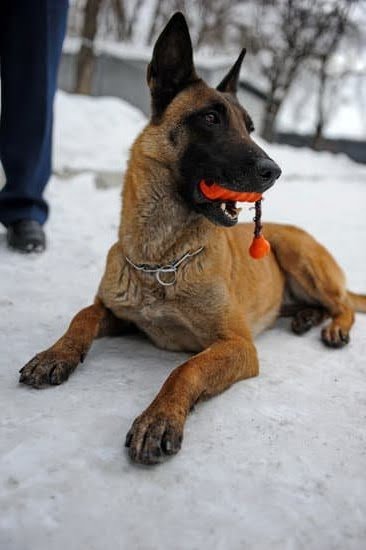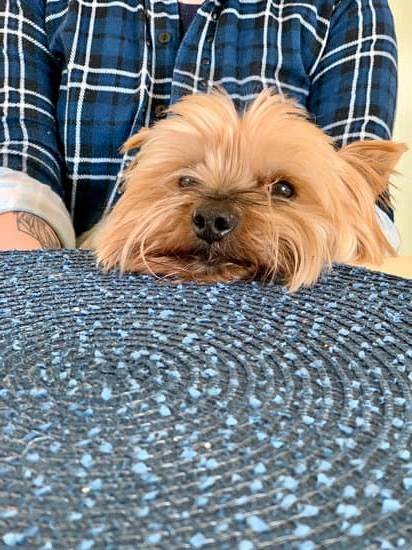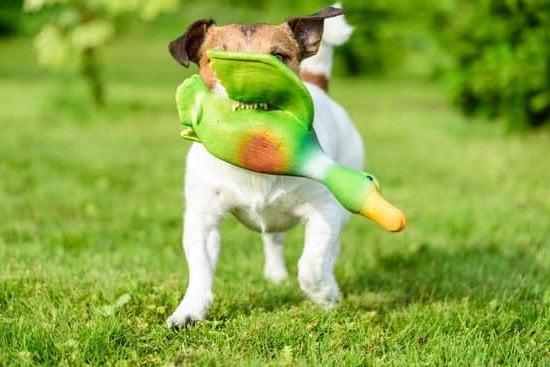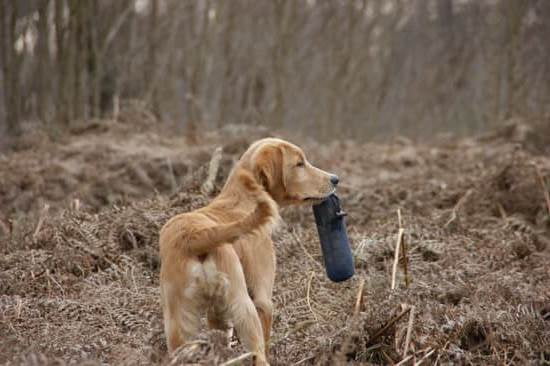Introduction
Training your dog to use a pee pad has many benefits, such as giving you peace of mind when you’re away from the house for extended periods of time. If you have an older pup or a small breed, training them to go on their own is also beneficial – it gives you easy access and control, while providing them with their own designated space. Other perks can include less pollution in your yard and even saving money on doggy mess cleanup products. Whatever your reason, here are the basics on how to train your pup for pee pad usage.
Step 1: Establish a Set Spot for the Pee Pad
When establishing yourself as the leader, it’s important to make sure that your dog knows where their designated area is and what is expected of them. Begin by choosing an area, such as near the back door or in room corner, then lay down a pee pad there. It’s best to use a reusable pee pad so that you can easily wash it after each use. Leave it there for at least the first week until your pup gets used to finding it and going on that space without fail.
Step 2: Use Positive Reinforcement During Training
Positive reinforcement is key when training any behavior in dogs; this will encourage them to want to repeat whatever they’re being asked of and make sure they understand that they did something good! Whenever they go in the right spot (on top of the pee pad), reward them with treats or verbal praise – make sure it’s something they like! Giving rewards intermittently encourages repetition and reliability; if they know there’s only a 50/50 chance of getting praised after going potty, they may take longer or not bother trying at all!
Step 3: Make Accidents Unexpected
No matter how positive reinforcement-oriented you are during training sessions, accidents might still happen either due to lack of supervision or because puppies forget quickly in which case reverting back to step 1 is necessary. Don’t yell or punish when this happens; instead scold gently but firmly in order for them to understand that this behavior will not be tolerated. Immediately afterwards bring them back onto the proper surface (the pee pad) so that memories don’t become confused with inappropriate areas throughout your home.
Different Types of Pee Pads and Selecting the Right Supply(s)
Pee pads come in many different varieties, so it’s important to choose the right ones for your pup. Dog pee pads vary in size, shape, and material. Some popular types include paper/tissue train pads or scented synthetic grass pads. Paper or training pads are great for young puppies or dogs who are just starting out with house training. They are inexpensive, disposable options that usually have an absorbent top layer with a plastic film backing so that liquid doesn’t leak through the pad. Scented grass mats can provide more of a natural feel and can help encourage bathroom behavior by simulating natural grass. These tend to be larger, cut to fit most crate sizes and come in versions treated with attractant pheromones to draw dogs to them for use as their designated bathroom area.
Preparing Your Home and Your Dog for Potty-Training
To start training your dog for pee pad use, you will first need to prepare both your home and your dog. Set aside an area of your home that will become the designated potty area. This can be a designated room or a few mats strategically placed around the home. Place pee pads in the area and encourage your dog to go on them when needed.
It is also important to use positive reinforcement during this process, such as giving treats and lots of verbal praise when they successfully go on the pad. Make sure the pee pads are easily accessible so they can reach them quickly. Additionally, try to limit their access to other parts of the house while they are still potty-training so accidents won’t occur elsewhere in the home. Keep any doors closed that lead to bedrooms and other non-pet areas of the home during this period.
Schedule regular times each day where you take your dog out on a leash or into their containment area with their pee pads available so they get used to going at certain times each day. If possible, take them out every couple of hours so they get used to having urgency when needing to go potty. Also make sure that if you notice signs that your pet needs to go (like sniffing around or pacing), immediately bring them outside or over to the containment/potty area with their pee pads. By doing this consistently throughout training, eventually he will understand that these cues mean it’s time for him to use those pads and not anywhere else inside the house.
Practical Strategies for Training Your Dog for Pee Pad Usage
Pee pads provide an easy and convenient way to potty train your puppy. Training a puppy to pee on the pads requires patience, consistency, and commitment from you. Here are some practical strategies that can help you achieve success:
1) Establish rules and strict guidelines – Set a routine so that your dog knows when it’s the right time to use the pee pad. Always reward positive behavior with praise or treats to encourage your dog’s correct action.
2) Consistency is key in training – Ensure that you have consistent expectations and enforce them every single time, even if it seems unimportant at times. This will show your pup what behaviour is acceptable and good behaviours must be rewarded as such.
3) Introduce positive reinforcement – Use positive reinforcement techniques like verbal or physical praises whenever they relieve themselves where they’re supposed to go. Give extra bonuses for anything beyond what was expected, such as staying put without wandering off when relieving itself on the pee pad.
4) Make sure to introduce distractions in intervals – As your puppy gets accustomed to relieving itself in the appropriate area, start introducing light distractions like noises, toys, etc., which help desensitize him from engaging in inappropriate behaviours when triggered by potential stimuli outside of his comfort zone.
5) Scale up gradually – Finally, as your pup grows stronger and more responsive towards commands from his master along with developing better self control, it’s time to transition out of using just pee pads permanently into potentially having full access to “outdoor potty trips” once far off boundaries have been established properly.
Consistently Reinforcing Good Habits
Training your dog to use a pee pad requires consistent reinforcement of good habits and taking a proactive approach to teach them the desired behavior. Start by choosing one area of your home where you want your pup to do their business. Place the pee pads in that area and encourage them to take their business there by praising them when they do use the pads. Once your pup gets into a habit of using the pads, try teaching some commands associated with the action. You can use “Go potty” or “Do your business” and reward them with treats or toys when they successfully follow through with using the pee pads rather than other areas of your home. It is important to stick to a schedule while training so start early on, maybe first thing in the morning and throughout the day at allocated times that work for you. Additionally, make sure you keep an eye out for accidents around the house and immediately return your pup to using their designated space. If they have an accident, don’t hit or scold them as this will only create fear; instead be firm with verbal corrections or return them back to their space after cleaning up the mess. With consistent reinforcement and patience, soon enough your pup should be fully trained in no time!
Strategies for Keeping Track of Your Dog’s Potty-Training Progress
It can be difficult to keep track of your dog’s progress when it comes to potty-training. A good way to do so is by keeping a log book that records each time they go pee on their designated pee pad. This will help you monitor the frequency and results of their trips. You can also reward positive behavior with treats or praise after they’ve used the pad. Additionally, if your canine goes somewhere else to relieve themselves, take them back to their spot immediately and have them try again. Be sure to also discourage wrong behavior as soon as possible. Create a consistent schedule for when and where you expect your furry friend to use the pads; this will create a routine and make it easier for them to remember what is expected of them. Regularly cleaning up their mess will also help discourage them from repeating unwanted behavior in the future.
Troubleshooting Common Challenges When Potty-Training
If your dog isn’t properly engaging with the pee pad, stick to positive reinforcement techniques such as providing verbal praise when your dog successfully goes potty on the mat. Additionally, you can reduce any distractions, such as toys and other tempting objects in the area. Lastly, incentivize pee-pad usage by rewarding your pup for making use of it. However, avoid using physical punishment if your pup messes up, as this could affect their emotional well being and make them less likely to follow through in the long run.
In addition to these strategies, you may need to change up other aspects of your pup’s routine since sometimes potty-training can be a matter of consistency. Make sure that the wee-wee pad is accessible at all times—ensure that it is not too far away so peeing won’t be inconvenient. You should also increase or minimize feeding times based on what works best for your pup’s needs; if they are overeating or not eating enough then this could restructure their daily habits—sometimes more frequent smaller meal sizes make it easier for pups to do their business. Lastly, make sure you take your pet outside frequently for walks and further exposure; this will help them become more comfortable with going potty outdoors instead of indoors.
Conclusion
When it comes to creating a long-term plan for potty training your dog with a pee pad, the key is consistency. From start to finish, consistently following your plan will ensure that your pup has success and continues to be trained in the right direction. Set rules and stick to them, always reward positive behavior with praise or treats and use patience when they make mistakes. If needed, seek out additional help from an obedience class or dog trainer. It’s also important to stay committed to regular bathroom breaks at regular intervals throughout the day. By staying consistent you can help minimize any setbacks your dog might encounter along their potty-training journey. With enough patience and consistency, you’ll have your pup housebroken in no time!

Welcome to the blog! I am a professional dog trainer and have been working with dogs for many years. In this blog, I will be discussing various topics related to dog training, including tips, tricks, and advice. I hope you find this information helpful and informative. Thanks for reading!





